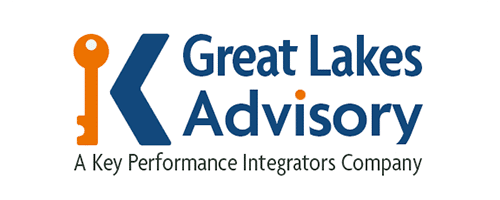Given supply chain disruptions over the last few years, you might have heard that you need to know how to map supply chain resources feeding your business. You need to identify supply chain issues because your product supply chain map keeps your company running. Putting together your supply chain process map helps you navigate future turbulence. Whether it’s a commodity chain map or a product supply chain map, many types of supply chain mapping can help you.
What Is Supply Chain Mapping?
What does end-to-end supply chain mean? Mapping a supply chain means knowing who your suppliers are but also where they get their supplies. You might wonder what is a supply chain map? The supply chain mapping definition simply means knowing where things come from originally and tracing them all the way to your business for analytical and informational purposes.
Why Is Supply Chain Mapping Important?
The importance of supply chain mapping means knowing who services your company’s offerings and where they do it. Not only does this help you potentially manage supply chain disruptions, but you can also ensure legal compliance, risk management, and due diligence. It also means you can assure consumers and investors alike of your sustainable resourcing of what you make and sell.
Understanding Your Supply Chain
Understanding your supply chain starts with knowing that it has two basic components to it:
- Entities: Your company relies on other businesses for source materials. They process them, and they also pack and ship various finished goods. Entities involved in a supply chain include customers, retailers, distribution centers, transportation companies, warehouses, vendors, and wholesalers.
- Functions: These are processes connecting supply chain entities. For instance, supplier connections might happen through sales and finance channels over phone lines and via email messages. Retailers and stores connect you to consumers, and product connections happen through physical transportation.
8 Benefits of Supply Chain Mapping
Mapping the supply chain your business relies on offers your organization several benefits.
1. Create Supply Chain Transparency and Visibility
Supply chain mapping and visualization help you accomplish several things. First, you can determine when quality concerns over your physical supplies might be creating bottlenecks in your supply chain. Second, you show investors and consumers alike where and how your products are sourced and created.
2. Identify and Understand Inherent Risks Within the Supply Chain and Protect Operations and Reputation Against Them
Some nations are more prone to exploitative processes that you might not want to be associated with. Child labor is one of them. Being able to prove your company doesn’t benefit from it anywhere in your supply chain gives you a legal safe space and protects your corporate reputation.
3. Make Informed Business Decisions and Prevent Risks
Supply chain risk mapping lets you identify the suppliers in your chain that are most crucial so you can form long-term relationships with them. Clear communication makes everyone’s role obvious.
4. Take Action to Remediate Issues and Protect Workers
A thorough investigation of your supply chain helps you remove yourself from or even prevent human rights abuses and environmental disregard that you don’t want to be associated with via reputation or liability.
5. Comply with Legislation
Companies are legally obligated to help fight modern slavery. They need to know what it is but also where it happens, and supply chain mapping is a crucial component of these efforts.
If you need industry expertise to help you with all of this, then find a business process management consultant who can do just that.
6. Supports Reporting on ESG Criteria and Attracts Investors
ESG stands for environmental, social, and governmental criteria that many investors and consumers expect businesses to follow. They want to know where their products came from and that the planet and people weren’t harmed along the way.
7. Streamline and Speed Up Processes
Analyzing connections in your supply chain lets you identify points in the processes where things might slow down. Addressing these pain points can expedite matters throughout the broader supply chain.
8. Discover the Elements That Most Affect Your Cashflow
Find what impacts your cash flow the most. Certain suppliers might be tight on their payment deadlines, and you might have customers that take too long to pay you for their goods.
How to Map Your Supply Chain
Knowing how to create a supply chain map isn’t something you have to do, as you can hire the service out. In fact, you can schedule that right now if you want.
Identify Stakeholders
You probably know most of your Tier One suppliers to start with. Getting information from them can be as simple as asking them a brief set of questions. Find out who they are, where they are located, what they sell, and who their suppliers are. Ultimately, you need to identify anyone and everyone who is involved in the creation, storage, and distribution of your company’s particular products so you know who all your supply chain partners are that you rely on.
Understand Supplier Relationships
Understanding supplier relationships means you need your supply chain mapping to go past your direct first-tier supply partners. Ask them to send your supply chain mapping survey to their suppliers, who would be the second-tier suppliers that you might not even know about. If they can carry it on to their suppliers, you can hopefully get all the way to the original sources at the end of the chain. There are three crucial steps to this process:
- Make It Worth Their Time: If you want Tier One suppliers to keep the mapping going down to their suppliers, you need to do more than ask nicely. Offer the data you collect in return for their participation so that they get something out of it that they can use to improve their business models and operations.
- Communicate Frequently: This process is basically a large conversation between many moving parts, many of whom might not even know each other. Frequent and constant communication foments input and signals to everyone how important you take all of this.
- Utilize the Right Technology: Some supply chain mapping can be done using pen and paper or a piece of spreadsheet software. However, that might not look professional when you share it with others.
Establish Costs and Timings
Looking at costs and timings can help you identify specific elements or points in your supply chain that either produce value or actually inhibit it. Knowing things that produce value might let you leverage them for more benefit, whereas identifying things that inhibit value gives you the chance to minimize their importance and impact on the overall process.
Look at things both big and small so you leave no stone unturned in improving the overall structure feeding your business.
Acknowledge Risks
Your supply chain mapping needs to identify and acknowledge the potential threats every entity in the chain might face, including:
- Economic: The global economy generally heads up or down at any given time, but regional and national economies might follow the trend or buck it. Your supply chain could be struggling overall even when individual entities are doing quite well at the very same time.
- Political: Political disruptions can be local, national, or even international. A war between two countries can create international ripples around the world, but even internal politics, such as export rule changes, can create complications outside a country’s borders.
- Environmental: Climate change results in adverse effects, but they are different for each part of the world in terms of how they happen when they happen, and how severe they are.
- Legal: Domestic legal concerns can impact any entities you share a country with, but potential legal difficulties might need more analysis for entities in other countries. Also, some entities might face multiple legal troubles if they operate in multiple countries at the same time. The rules in California aren’t the same as in the EU.
Data Tracking
Payments, invoicing, order updates, shipping, returns, and inventory are all crucial pieces of data to monitor at all times. Not only should you know where your company stands on all these fronts, but you should also make sure the numbers are updated frequently and accurately.
If possible, automate all of this. Doing so gives you the chance to streamline your operations for more efficiency. From there, you can institute cost controls that keep goods moving and hopefully boost your potential revenue coming from all of this.
Get Help With Mapping Your Supply Chain
Reach out to an industry specialist if you want help with mapping out your supply chain. They can reach out to your suppliers and start gathering the information necessary to accurately lay out the connections and entities that constitute your company’s network of resources for products you make, sell, and distribute.



